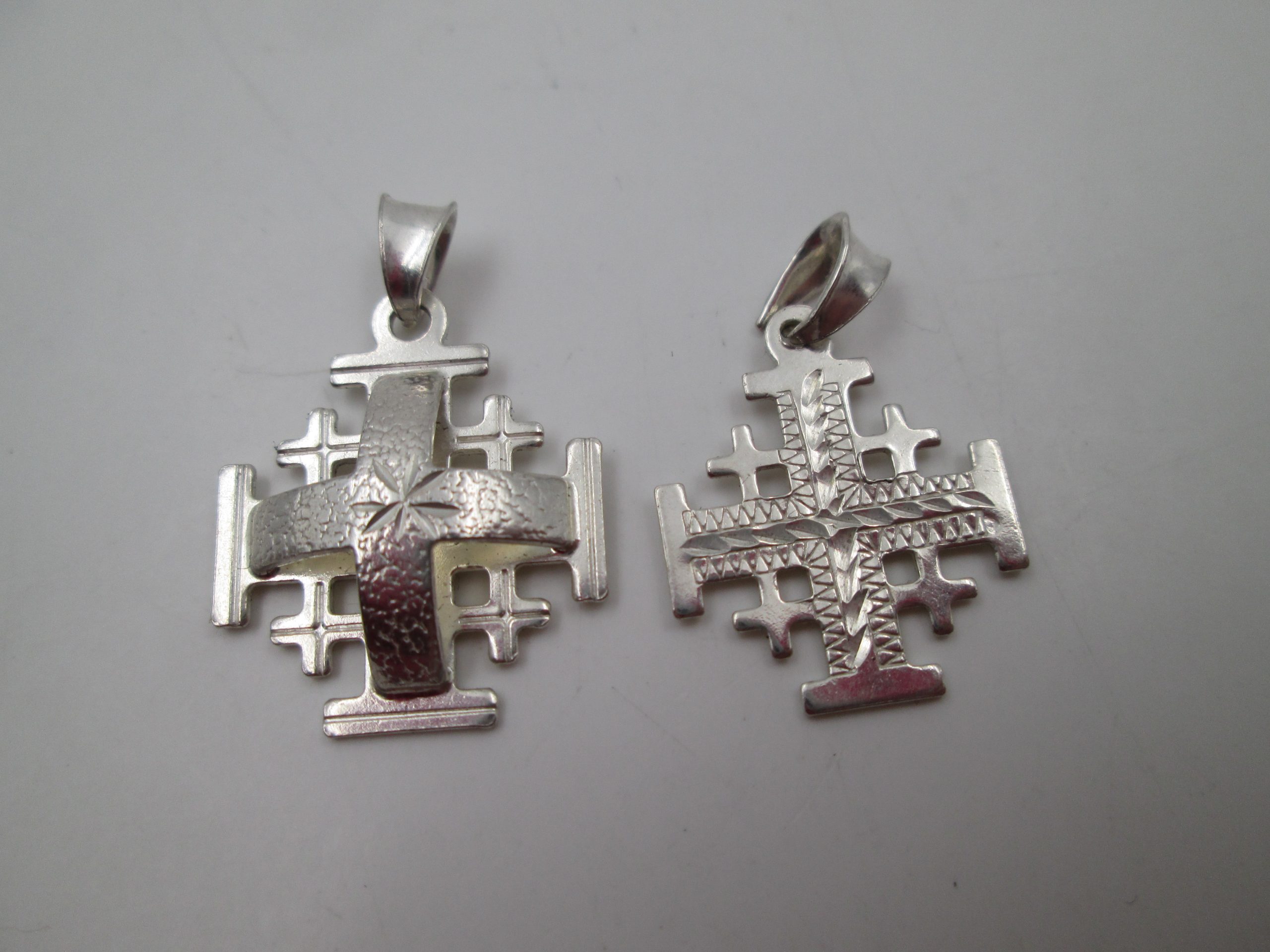The Jerusalem cross is more than just a religious symbol; it is a testament to centuries of history, faith, and artistry. These handcrafted pieces, often found in churches, museums, and private collections, capture the essence of Jerusalem’s rich spiritual and cultural heritage. At the [Jerusalem Art Museum], visitors can explore a wide range of Jerusalem crosses, each telling a story that bridges the past and present.
This article delves into the origins, symbolism, and artistry behind these remarkable artifacts, offering a comprehensive guide for enthusiasts, collectors, and history lovers alike.
The Origin and History of Jerusalem Crosses
The Jerusalem cross has a history that dates back to the medieval era, associated with the Crusades and the Kingdom of Jerusalem. Its distinctive design features a large central cross surrounded by four smaller crosses, symbolizing the spread of Christianity to the four corners of the world.
Historical Roots in the Crusader Era
During the 11th and 12th centuries, Crusaders carried the Jerusalem cross as a sign of faith and unity. The central cross represented Christ, while the smaller crosses symbolized either the four Gospels or the four directions to which the message of Christianity was sent. These crosses were often crafted into jewelry, ceremonial items, or church relics, blending artistry with spiritual significance.
Religious and Cultural Significance
The Jerusalem cross serves as a powerful emblem in both religious and cultural contexts. In Christian tradition, it represents sacrifice, resurrection, and devotion. Beyond religious symbolism, it has also been embraced in art and architecture, featuring in mosaics, frescoes, and handcrafted metalwork.
Crafting Jerusalem Crosses: Artistry and Techniques
Handcrafted Jerusalem crosses are celebrated for their meticulous design and craftsmanship. Each piece is unique, reflecting the skill and dedication of the artisans who create them.
Materials and Craftsmanship
Traditionally, Jerusalem crosses are crafted from metals such as silver, gold, or bronze, but modern artisans also use wood, glass, and stone. The process involves careful engraving, casting, and polishing to achieve intricate details. Artisans often incorporate gemstones or enamel to enhance the visual appeal and significance of each cross.
Symbolism in Design Elements
Every element of a Jerusalem cross is imbued with meaning. The central cross anchors the design, while the smaller crosses reflect outreach, guidance, and faith. Some artisans add inscriptions, biblical motifs, or geometric patterns, further enhancing the spiritual and historical narrative embedded in the piece.
Types of Jerusalem Crosses on Display
At the [Jerusalem Art Museum], visitors can experience a wide variety of Jerusalem crosses, each with a distinct style and story.
Medieval-Inspired Crosses
These crosses replicate the original designs from the Crusader period. They often feature aged metals, intricate engravings, and historical authenticity, transporting viewers back to medieval Jerusalem.
Contemporary Artistic Interpretations
Modern artisans reinterpret the Jerusalem cross, blending traditional symbolism with contemporary aesthetics. These pieces often experiment with innovative materials, minimalist designs, or abstract forms, making them suitable for both devotion and decoration.
Collector’s Editions
Some Jerusalem crosses are created as limited editions for collectors. These rare pieces combine historical accuracy with artistic excellence, often accompanied by certificates of authenticity and detailed documentation of their heritage.
Preserving and Appreciating Handcrafted Jerusalem Crosses
Understanding the historical and artistic significance of a Jerusalem cross enhances the appreciation of these unique artifacts.
Conservation Techniques
To maintain their beauty and longevity, Jerusalem crosses require proper care. Metal crosses should be polished carefully, while wooden or painted crosses must be kept away from moisture and direct sunlight. Museums like the [Jerusalem Art Museum] follow strict conservation practices to ensure that each cross remains in pristine condition for future generations.
Educational and Spiritual Value
Beyond their aesthetic appeal, Jerusalem crosses provide educational insight into the region’s religious history. Visitors and collectors gain a deeper understanding of medieval craftsmanship, religious symbolism, and the cultural legacy of Jerusalem. For many, owning or viewing a Jerusalem cross is also a spiritual experience, connecting them to centuries of faith and devotion.
The Jerusalem Cross in Modern Culture
The enduring appeal of the Jerusalem cross extends beyond museums and churches. Today, it appears in fashion, jewelry, and home decor, often serving as a symbol of faith, identity, or artistic taste. Its timeless design continues to inspire modern artisans, bridging ancient traditions with contemporary creativity.
Influence on Contemporary Art
Artists worldwide draw inspiration from the Jerusalem cross, incorporating its geometric balance and spiritual symbolism into paintings, sculptures, and installations. This fusion of historical and modern elements keeps the legacy of the Jerusalem cross alive in contemporary culture.
Tourism and Cultural Appreciation
Tourists visiting Jerusalem often seek Jerusalem crosses as meaningful souvenirs. Museums, artisan workshops, and local markets provide authentic handcrafted options, allowing visitors to connect with the city’s rich heritage.
Conclusion: Embracing the Legacy of Jerusalem Crosses
Handcrafted Jerusalem crosses are far more than decorative objects—they are windows into history, culture, and faith. Each cross embodies centuries of artistry, devotion, and symbolic meaning, making them invaluable treasures for collectors, historians, and spiritual seekers.
Visiting the [Jerusalem Art Museum] offers an unparalleled opportunity to experience these remarkable artifacts up close, appreciate their craftsmanship, and understand their historical significance. Whether as a collector, student, or traveler, engaging with Jerusalem crosses fosters a deeper connection to Jerusalem’s enduring legacy.
By exploring these exquisite crosses, you not only witness masterful artistry but also become part of a rich tradition that has inspired generations across the globe.



